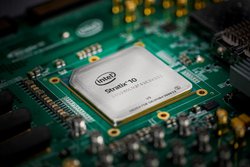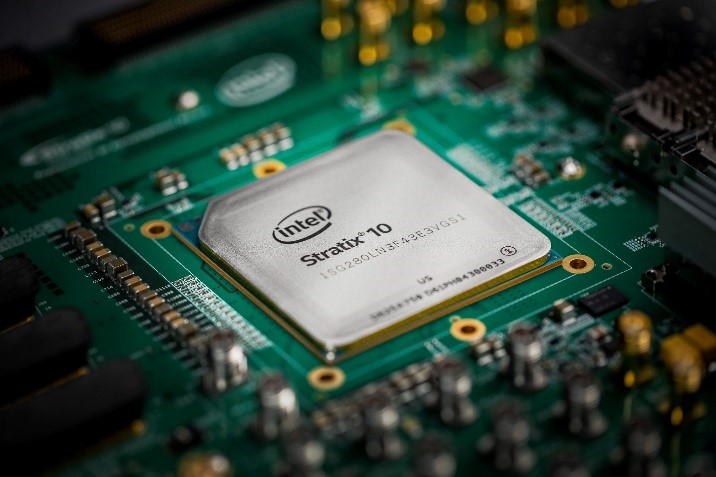
April 4, 2018
By: Michael Feldman
Paderborn University has selected a Cray CS500 cluster accelerated by FPGAs as the first phase of its Noctua multi-petaflop supercomputer.
The new supercomputer will be comprised of 272 compute nodes, connected by Intel’s 100 Gbps Omni-Path fabric. Each node will be equipped with two 20-core Xeon Gold (Skylake) processors, yielding a system core count of 10,880. The system will also come with 720 terabytes of flash-accelerated Lustre storage, supplied by a Cray ClusterStor L300N system.
 The most unusual feature of the system is the presence of 32 FPGAs, in this case Intel Stratix 10 devices. According to Paderborn’s press announcement, the selected FPGA will have 5,760 variable-precision DSP blocks, which implies this is either the Stratix 10 GX or SX 2800. The SX comes with an embedded quad-core ARM processor, while the GX series does not. In either case, the 2800 is the top-of-the-line Stratix 10 with regard to DSP floating point performance, providing 9.2 single precision teraflops (and some fraction of that in double precision). Researchers at the university have already ported the first set of applications to these FPGAs.
The most unusual feature of the system is the presence of 32 FPGAs, in this case Intel Stratix 10 devices. According to Paderborn’s press announcement, the selected FPGA will have 5,760 variable-precision DSP blocks, which implies this is either the Stratix 10 GX or SX 2800. The SX comes with an embedded quad-core ARM processor, while the GX series does not. In either case, the 2800 is the top-of-the-line Stratix 10 with regard to DSP floating point performance, providing 9.2 single precision teraflops (and some fraction of that in double precision). Researchers at the university have already ported the first set of applications to these FPGAs.
Noctua, which will be installed at the Paderborn Center for Parallel Computing (PC2), will be used to provide scientists from the university and elsewhere in Germany with a platform for running engineering applications in material science, optoelectronics and photonics. It will also be used for more basic research into high performance computing in order to develop parallel simulations codes for FPGAs. PC2 looks to be making a name for itself in reconfigurable computing, an area that most HPC centers have bypassed.
The selection of Cray and the CS500 was not necessarily an obvious choice for Noctua. In general, Cray does not offer FPGA accelerators as a regular option on its supercomputers, at least not that it talks about to any extent. In this regard, the company’s CS500 is a pretty standard cluster, offering Intel Xeon CPUs, with the option of PCIe-attached NVIDIA Tesla GPUs or (when Intel was still offering them) Xeon Phi coprocessors. Nevertheless, Cray’s reputation for HPC innovation and its devotion to heterogeneous computing seems to have carried the day.
"Cray has a reputation both as a technology pioneer and for pushing the boundaries of supercomputing unlike any other IT company," said Prof. Dr. Christian Plessl, director and head of the board of PC². "Cray is an ideal partner for delivering the computing power required by our users and for collaborating with PC² in forward-looking HPC systems research."
This initial phase of Noctua is expected to deliver three times performance of the center’s current flagship system, OCuLUS, which is powered by a combination of Xeon, Xeon Phi, and NVIDIA GPUs, and delivers over 240 peak teraflops. The Cray machine is expected to go into production sometime in 2018. The second phase of Noctua is scheduled for 2020.
